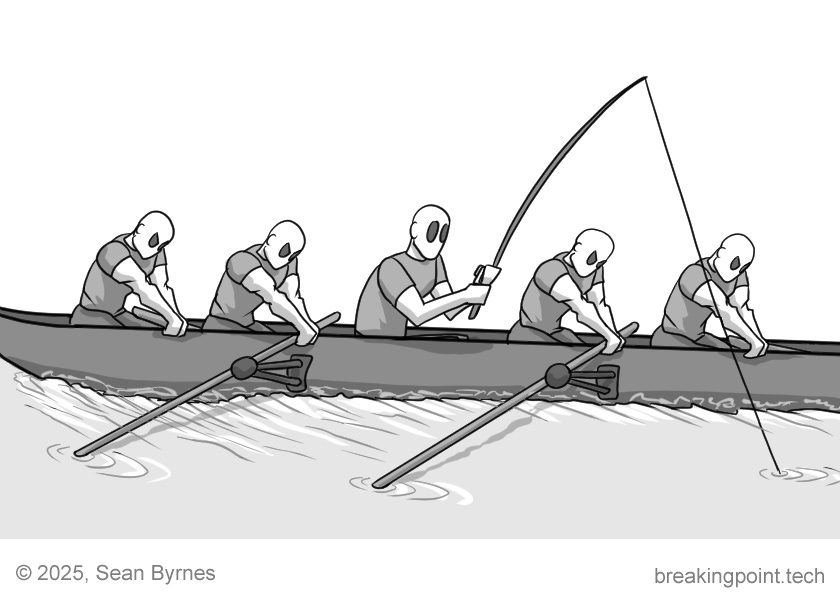Who is holding you back?
Every organization has at least one under-performer, and they drag down everyone.
If you liked reading this, please click the ❤️ button on this post so more people can discover it on Substack. Thanks!
Every business has that one person. Everyone likes them, they are working hard and in the past they did some amazing work for the business. People look to this person with respect and they have a lot of influence.
Unfortunately, that same person is also underperforming.
Maybe the company grew and they weren’t able to keep up. Or maybe their job changed and they are no longer able to do it well. Or maybe others covered up their inability in the past.
Whatever the reason, these people are holding your company back. It’s not just that they can’t do their job well, it’s that their inability to do their job affects everyone around them. Companies need to work together, and if there is a weak link it will drag down productivity on all the surrounding teams.
Even worse, these under-performers lower the expectations of performance for everyone. The longer you leave an under-performer in their role, the more everyone else will assume that is what the company expects. Overall performance will drop as everyone does less assuming the company is fine with it. It becomes a contagion.
You can understand how this happens! It’s hard to fire someone who is likeable and has done great work in the past. It’s even harder to fire someone that everyone else looks to with respect. You don’t want to hurt morale so you put off making a hard choice. That just makes the problem worse.
When faced with an under-performer, you need to take action quickly. Here are a few actions you can take:
Change their role. Just because they are struggling with their current role doesn’t mean there is no role where they can excel. If they really did great work once, try to find another role where they can do great work again.
Provide training and coaching. If they are willing, you can try to give them more support in the form of training and coaching. This can’t last forever, but investing in your team can be a strong signal to everyone else.
Let them go. If someone is struggling, you are doing no favors by keeping them in the same position. Firing someone can be a good opportunity for them, especially if you can give them a generous severance and good reference based on their prior work. Giving them the opportunity to find somewhere they can be great again is better than letting them struggle.
None of these are easy, and all of them come with complications. If you provide training to some employees and not others, it can look like favoritism. If you change roles when someone underperforms, it can seem like you are moving problems around. Firing people always risks morale problems.
But, just because something is hard doesn’t mean you shouldn’t do it. Taking action quickly contains the infection and prevents it from becoming contagious. Your employees are smart and they see what is going on, and they are waiting to see what you will do about it.
You and your team work extremely hard to make your business work. You cannot let under-performers hold everyone back, it’s not fair to them. Hold the line, and make it clear that high performance is not optional.
That’s how you make sure your team never slows down.
For more on Managing People, see:



Reminds me of Eliyahu M. Goldratt's "The Goal." Every team has a Herbie, and it is Herbie's pace that sets the organizational pace. One should try various ways to help Herbie increase their pace, and often that will help and a new Herbie will surface (another team member will be setting the slowest pace). But like any sport, not all players can be on any team, and your original Herbie may be a better contributor in another league or another sport. As long as management shows an active interest in trying to accommodate current players, the rest of the team will support and appreciate the reassignment of the one who can no longer keep up.